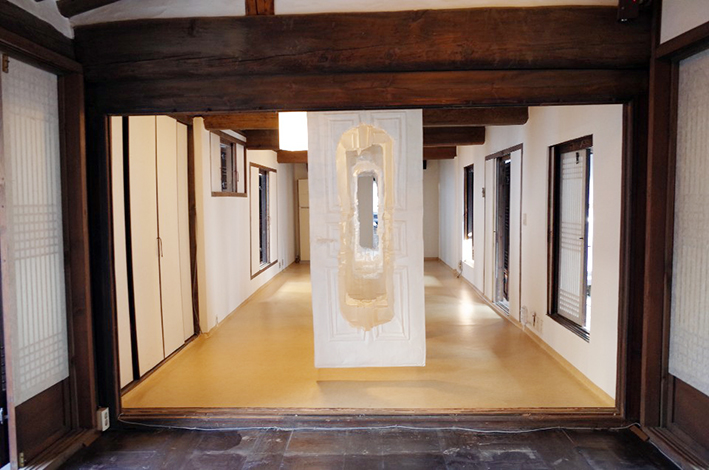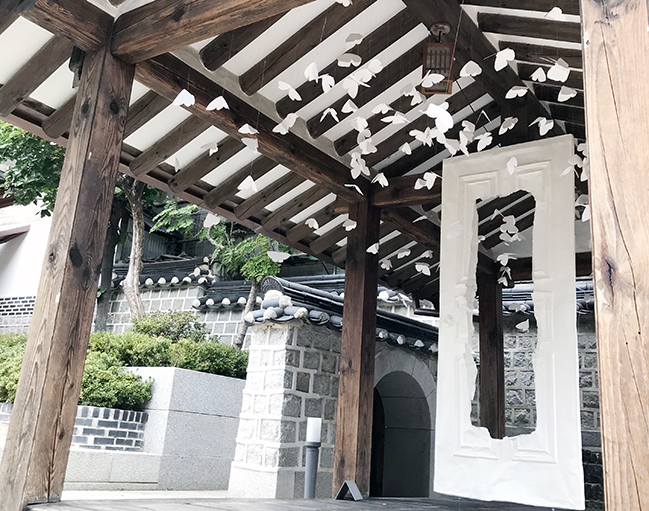
Artists can utilize installation as an artistic measure to portray their theme. Compared to art genres where an artist’s central theme is displayed on a fixed surface or within a set of objects that the artist provides, installation art utilizes the existing environment as an immersive three-dimensional background to create an interaction between the environment and the content created by the artist.
I have been looking for an opportunity to experience creating artwork using this method, and I had the chance to do so this last September when I participated in an exhibition as an assistant. The exhibition was called “Pause, Freedom from Memory,” organized by the installation artist Song Young-Wook. His work, crafted with traditional Korean paper, Hanji, is characterized as cast-up works that resemble still-life objects.

Song’s display consisted of two artworks: Beyond and Stranger. The first, Beyond, composed of multiple Hanji castings of real doors, resembles a path, reminding us that people constantly walk through doors into new spaces. For me, this artwork symbolized the past and present. The placement of the doors symbolized the memories that we often forget and let slip through the doors of our minds. Although the doors—our past memories—represent a great portion of our life, we are not able to remember each and every moment, which is a sad truth. I believe that his artwork is significant as it gives viewers an opportunity to reminisce their lost memories.

The second artwork from this exhibition was Stranger. Song portrayed a scene from his past, representing the boundaries between beauty and fear. The sight of hundreds of butterflies and moths facing each other in front of the artist’s studio expresses the beautiful yet terrifying situation he had encountered. Song was once surrounded by moths which he first thought were attractive butterflies, but after close observation he realized their true identity and was horrified. As what appeared to be beautiful suddenly turned into objects of revulsion, I felt a sense of alertness and fear. When seen from afar, the work looked majestic and beautiful, but seen up close it was unnerving. The components of the scenery seemed to be synonymous with the fragility of the human memory, as Song showed a distorted memory to the readers by interpreting a single incident from two different perspectives.These two installations embody Song’s practical usage of Hanji as a medium. I interpreted his use of Korean paper as a metaphor for human memories. Hanji’s fragile attribute resembles our lives, which consists of memories vulnerable to being distorted and reconstructed into different forms. The method he applied in creating the artworks is remarkable in terms of its features. After tearing a large piece of Hanji into the size of his palm, he created multiple layers of paper above the objects’ surface. Once the molding had been completed, he removed the frame from the original object. While the casting shows the clear shape of the artwork, there is no content inside. From my perspective, this composition suggests the ironic and paradoxical structure of human memory: the collision between existent and non-existent. While the artworks’ form exists, there is no subject matter inside. In other words, while the forgotten moment exists in our lives, our minds do not remember it.
This experience not only extended my knowledge of installation art but also motivated me to reassess the value of my memories. I recognized that forgetting a memory is not always a harmful, but rather acts as a beneficial component that alleviates the moments of suffering.

Minsang Bae
Junior
Seoul Scholars International

